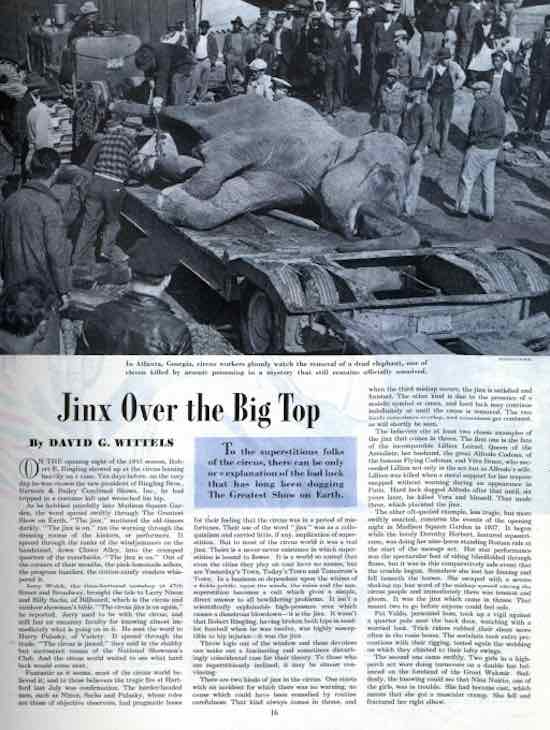The Last of the Greatest Show on Earth
When it combined with the Barnum & Bailey circus in 1919, Ringling Brothers proclaimed itself “The Greatest Show on Earth.” But this May, the show will take down its tents for the last time.
Ringling’s decision won’t surprise many Americans, who can’t imagine how circuses could stay alive today. How could trapeze artists, high-wire walkers, bareback horse riders, subdued lions, waltzing elephants, and clowns still make money? Today they must compete with video games and computer-animated blockbuster movies. Ticket sales have declined sharply, and operating costs have steadily risen. Yet these weren’t the critical factors.
The end came when the circus, under pressure from animal-rights groups, agreed to stop using elephant acts on tour. When the elephants departed, so did the big audience numbers.
In the past, circuses rode out the hard times. As the December 2, 1944, article “Jinx Over the Big Top” shows, they had survived the Depression, fires, striking workers, and — as the article explains — implacable jinxes.
But Ringling couldn’t survive a public that had become uncomfortable with the idea of training wild animals to perform tricks.
The circus is not dead. It’s only Ringling Brothers that’s folding up its big top. Smaller circuses will continue to tour the country, setting up alongside rodeos, state fairs, and mall parking lots. They’ll feature the traditional high-wire walkers, trapeze artists, and, of course, clowns. But any circus had better have a replacement for its trained animal acts, because they won’t be coming back.

Featured image: SEPS